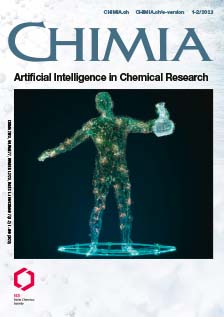Bayesian Optimization for Chemical Reactions
DOI:
https://doi.org/10.2533/chimia.2023.31PMID:
38047851Keywords:
Bayesian optimization, Machine learning, Reaction optimizationAbstract
Reaction optimization is challenging and traditionally delegated to domain experts who iteratively propose increasingly optimal experiments. Problematically, the reaction landscape is complex and often requires hundreds of experiments to reach convergence, representing an enormous resource sink. Bayesian optimization (BO) is an optimization algorithm that recommends the next experiment based on previous observations and has recently gained considerable interest in the general chemistry community. The application of BO for chemical reactions has been demonstrated to increase efficiency in optimization campaigns and can recommend favorable reaction conditions amidst many possibilities. Moreover, its ability to jointly optimize desired objectives such as yield and stereoselectivity makes it an attractive alternative or at least complementary to domain expert-guided optimization. With the democratization of BO software, the barrier of entry to applying BO for chemical reactions has drastically lowered. The intersection between the paradigms will see advancements at an ever-rapid pace. In this review, we discuss how chemical reactions can be transformed into machine-readable formats which can be learned by machine learning (ML) models. We present a foundation for BO and how it has already been applied to optimize chemical reaction outcomes. The important message we convey is that realizing the full potential of ML-augmented reaction optimization will require close collaboration between experimentalists and computational scientists.
Funding data
-
NCCR Catalysis
Grant numbers 180544
Downloads
Additional Files
Published
Issue
Section
License
Copyright (c) 2023 Jeff Guo, Bojana Ranković, Philippe Schwaller

This work is licensed under a Creative Commons Attribution 4.0 International License.







